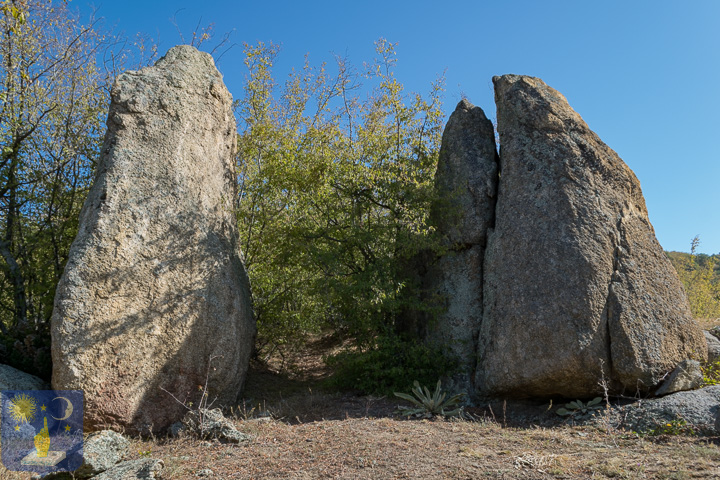The shape of the stones tells us about the intention of the builders. How they wanted to use the stones. It reveals to us the purpose of the pyramids.

The size of stones
The size is particularly revealing. In Bulgaria like other megalithic sites around the world we know that the bigger the stones the older they are.
The larger stones and boulders that have a rough finish probably belong to the Lemurian epoch. According to Steiner the Lemurians belonged to an earlier epoch of humanity that was less developed. The Lemurians had more blurred vision and therefore we can attribute to them the early stones that are bigger and lumpier, with little or no finishing.
The relatively smaller stones that are better finished would then belong to the early Atlantean epoch.
And the Lemurian stones are always found under the later Atlantean stones.
The shape of the stones
The stones of the megalithic sites of Bulgaria have a rounded shape as opposed to the rectilinear blocks that form the Egyptian pyramids and Stonehenge. The builders of the Giza and Stonehenge broke and chiseled the stone to fit into an artificial structure.
By comparison the stones of Rozovets are molded like clay on a potter’s wheel.
Rudolf Steiner’s reading the Akasha Chronicle helps us make sense of the shape of the stones. The early Atlanteans had tools and could transform the energy contained in seeds into energy for transforming nature.
And we see this in the fact that we find no traces of mechanical production of stones. There are no traces of settlements, workshops and debris from the production of the megaliths. And there are no unfinished megaliths left in their rock base.
Rudolf Steiner explains that the Lemurians and early Atlanteans lived in tune with Earth with houses built of trees with artfully intertwined branches.
And none of these stones are made from a single mold. There is no industrial process. Each one is made individually and has its own size but obeys the same canon.
The stones are usually shaped with a flat back facing North and a bulge facing South like a Sunflower.
In many cases we find stones where the bottom left side on the East side is molded at a sharp angle to form a tip that is pointed into the ground. They are either triangular in shape or rhomboid.
The triangle as number 3 is an expression of the Moon.
The rhomboid contains the Golden Ratio, universal harmony that is found in all things. It is as if the Bulgarian pyramid builders had captured cosmic harmony and set it in stone.
No physical representation
There is no rock art at the Bulgarian pyramids like we find at Gobekli Tepe and Lascaux. Their art tells us their story, one of a lack of conceptual thinking. The physical representation of people and animals reflects a certain stage in the evolution of human consciousness. It means that the artist has a self-awareness and a detachment from his environment. He represents what he sees as something external to himself. It also means that structured language was not practiced.
Steiner reminds us that the Lemurians and early Atlanteans did not have language as we know it. They did not designate external objects.
Periods of construction
At many sites we can distinguish 3 epochs of megalith building, the first 2 of which are similar to the classification of the age of stones at Machu Picchu in Peru.
The oldest stones that are akin to the Hanan Pacha period look like molten granite as if the stone had been liquid before solidifying.
The next epoch relates to the Urun Pacha period that is best known as the walls of Cusco. It has its equivalent in the standing stones. They look like they were molded as if the consistency of the stone was already firmer but could still be shaped like puttee.
Position of the stones
We see at all the megalithic sites in Bulgaria that the stones are always turned towards the Sun.
From the largest scale of the pyramid to that of individual stones they have been positioned to point South
Inclination of the stones
The stones at the Bulgarian pyramids are inclined away from the Sun at around 20 degrees off a North-South axis which reminds us of Earth’s precessional tilt as if they were paying tribute to the Sun. The preeminence of the Sun is highlighted by Steiner.
Skewer holes
We also find what has been termed in Egyptology drill holes. But these holes might not have been drilled into the stone after they were made. They might be skewer holes. The soft granite stone would have been molded around a skewer-like rod just like a glass maker holds the soft glass paste over the fire to shape it before it cools down.
Sutures
At several sites we find granite stone that is molded like pressed glass. The suture marks are like the ones found on a glass bottle.


